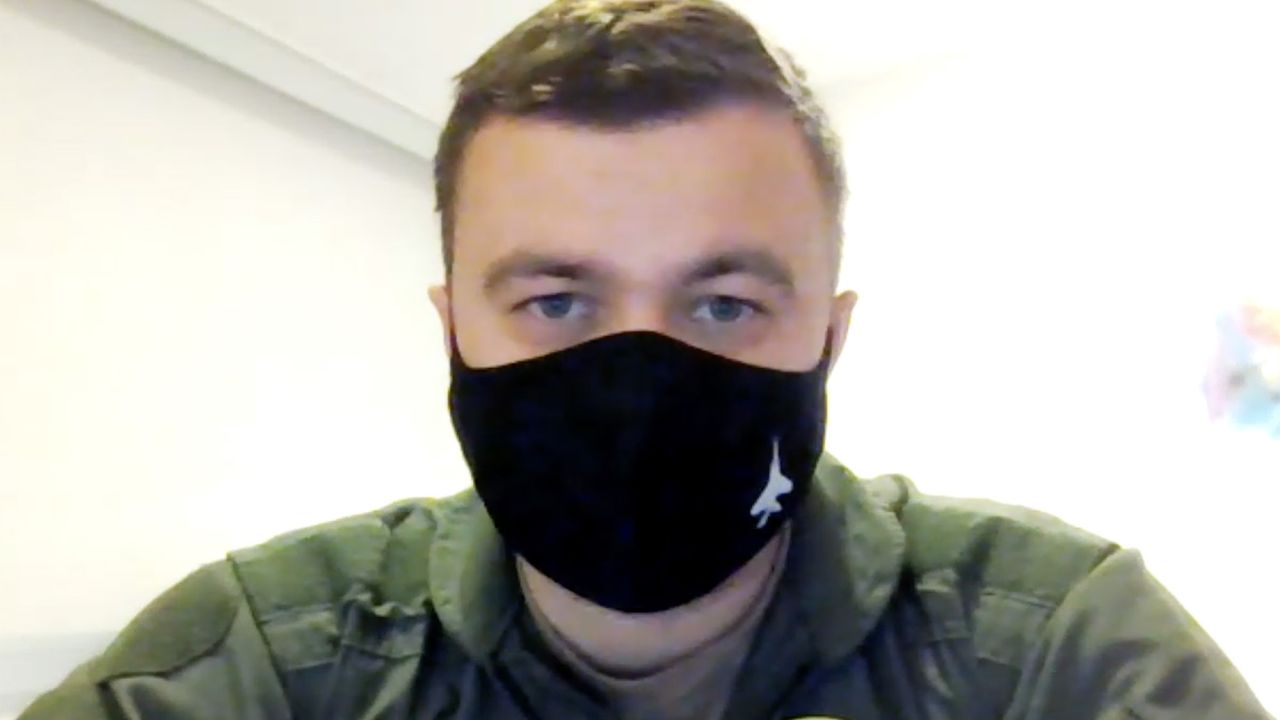A Ukrainian military who asked to be identified by his call sign Moonfish for security reasons spoke with CNN via Zoom from an undisclosed location, sharing his thoughts about his F-16 training and the pressing need for advanced air capabilities to secure Ukrainian skies amidst ongoing war with Russia.
Training an F-16 pilot typically spans years; however, Moonfish faces a condensed timeline with just six months—currently, he is in month two. But it's enough to master the basic capabilities that Ukraine needs, he says.
“The F-16 is a Swiss Army knife,” he said. “It’s a very good weapon that can carry out any mission.”
Following Kyiv's extensive lobbying, the US has agreed in August to send fourth-generation fighters to Ukraine, expected to arrive early next year, with Ukrainian crews currently training to operate them. Meanwhile, Russian forces retain air superiority over twenty months into the all-out war, leaving Ukrainian troops without the critical air support they require.
“Even assuming the war ends tomorrow, we all understand it will be just a waiting period for the next round,” Moonfish said. “We must build proper air power with Western jets and effectively trained staff. This will be the biggest deterrent – so that 24 February [the full-scale invasion by Russia last year] doesn’t happen again.”
Ukraine's Air Force Command spokesperson Yurii Ihnat is confident that a six-month training program will enable Ukrainian pilots to support ground troops and counter Russian air superiority; however, the imminent winter brings renewed threats from Russian missiles and drones, which previously crippled Ukraine's energy sector. Reinforcing this, Air Force commander Mykola Oleshchuk told CNN that despite intercepting 75% of such attacks, Ukraine is in urgent need of enhanced air-defense systems and modern aircraft to ensure national security and gain air control.
“We still keep [Ukraine's Soviet-era fighter jets] in good condition, but we need to understand that missions [flown by] our pilots in Soviet equipment are deadly,” Oleshchuk said. “And we are losing the best of them.”
Trending Now
Former MiG-29 squadron leader "Moonfish" has transitioned from simulators to actual F-16 cockpits, a change that requires adjustment due to the cramped space. He finds the F-16's avionics advanced and the controls straightforward, contributing to its high maneuverability and a more aggressive piloting style.
If the F-16s were already in Ukraine, Moonfish believes a primary role would be countering Russian drone and missile assaults. He points out that unlike the outdated systems of Soviet-era jets, the F-16's software is continuously updated to address modern threats like drones, which weren't considered significant when older aircraft were designed.
“The software [on the F-16] is constantly being improved,” Moonfish said. “At the same time, the software [systems] on [Soviet-designed] MiG-29 and Su-27 are still from the late 1980s, when these planes were being developed. That period, drones existed only in science fiction books. I mean that, at the time, no one considered drones to be a serious threat that could be destroyed by fighter aircraft.”
Flying F-16s has been a shared aspiration for "Moonfish" and his late comrade "Juice," renowned Ukrainian pilot Andriy Pilshchikov who advocated for the US transfer of these jets before dying in a combat mission. "Moonfish," unable to bid farewell in person, dedicates his continued training on the F-16s to the memory of "Juice" and the collective ambition of his fellow pilots.
Read also:
- UK intel: Russia integrates radar plane with S2A missile system eyeing Ukraine’s future Western jets
- F-16 training center for Ukrainian pilots opens in Romania
- Ukrainian Air Force likely to receive F-16s this winter, retired US Gen. Petraeus believes
- Media: Ukraine expects to receive F-16 fighter jets in spring 2024
- CNN: Some Ukrainian pilots receive English training in Texas ahead of F-16 Jet instruction

